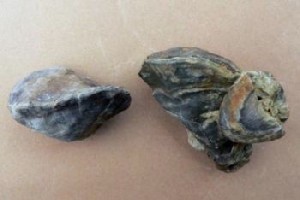An international research team, with Spanish participation, has discovered a new species of mollusc,Polyconites hadriani, in various parts of the Iberian Peninsula. The researchers say this species, which is the oldest in its genus, adapted to the acidification of the oceans that took place while it was in existence. This process could now determine the evolution of modern marine systems.
The new species Polyconites hadriani, which was discovered in 2007, has been crowned the oldest in the Polyconites genus of the family Polyconitidae (rudists), a kind of extinct sea mollusc. To date, scientists had thought that the oldest mollusc in this genus was Polyconites verneuili.
“P. hadriani is similar in shape to P. verneuili, but it is smaller (with a 30mm smaller diameter), and with a thinner calcite layer to its shell (around 3mm difference)”, Eulàlia Gili, one of the authors of the study and a researcher at the Department of Geology of the Autonomous University of Barcelona (UAB), tells SINC.
The new species was found in several parts of the Iberian Peninsula – in the Maestrat basin, the Vasco-Cantábrica basin, to the south of the Lusitania basin and in the Cordillera Prebética mountain range, “where it accumulated in dense conglomerations along the banks of the carbonate marine platforms of the Lower Aptian period (114 million years ago)”, says Gili.
“This recognition of P. hadriani resolves the lengthy uncertainty about the identity of these polyconitids of the Lower Aptian”, the researcher says in the study, which has been published in the Turkish Journal of Earth Sciences.
Adaptation to acidification of the oceans
Gili says the Lower Aptian was a convulsive period, during which significant climate change took place. P. hadrianiexisted at the time when the first oceanic anoxic event of the Cretaceous took place (between 135 and 65 million years ago). This event was characterised by a “lack of oxygen on the seabed, which led to the mass burial of organic carbon and climate cooling”.
“The thicker calcite layer of the shell of this new species compared with that of its predecessor (of the Horiopleura genus), could have helped it adapt better to life in colder waters, which were more acidic due to the increased solubility of atmospheric CO2”, the geologist explains.
The researcher adds: “The response of these rudists to ocean acidification could apply to the future evolution of today’s marine ecosystems, above all among those kinds of organisms that form their shells or skeletons from calcium carbonate”.
courtesy: news release issued by the FECYT – Spanish Foundation for Science and Technology



 August 2nd, 2012
August 2nd, 2012  Riffin
Riffin 
 Posted in
Posted in 